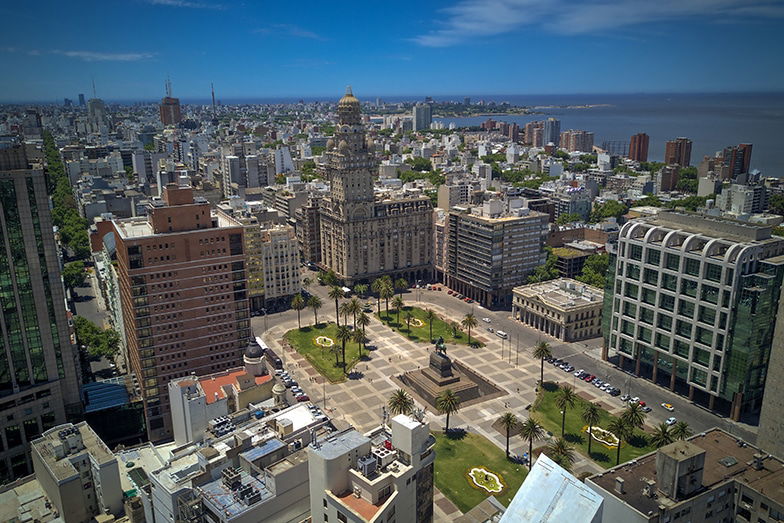The History of Uruguay

Before we start, let’s note that ‘Uruguay’ comes from the Uruguay River, which means “river of the painted birds” in the Guarani language.
Uruguayan historian and author Eduardo Galeano asserted that “On the map, surrounded by its large neighbors, Uruguay seems tiny. But not really. We have five times more land than Holland and five times fewer inhabitants. We have more cultivable land than Japan, and a population forty times smaller.”
Indeed, Uruguay appears to cover less territory in comparison to its neighbors on the map, because it does. But while the country is the second smallest in South America in terms of area, it is not at all small. Uruguay obtained its independence in 1828, sharing historical and cultural similarities with Brazil and Argentina. With its historical, stable social and economic policies, the country, which has strong relations with the United Kingdom, France, and Italy, has a modern profile.
Where is Uruguay?
Bordering Argentina and Brazil, Uruguay also has a coastline along the Atlantic Ocean.
How to get to Uruguay?
Turkish Airlines offers connecting flights from İstanbul to Montevideo, Uruguay’s capital. The length of flights via Panama City or Sao Paulo will vary depending on the transit. For flight schedules and other information, please see our plane ticket page.
When to go to Uruguay?
The best time to visit Uruguay is between November and February, when the country is nearing the end of its spring-summer season. The spring and winter months in Montevideo and other cities tend to be rainy but the summer months are pleasant.
The capital, Montevideo, and other Uruguayan cities

Uruguay capital: Montevideo
As of 2023, the Uruguayan capital, Montevideo, is home to about half of the country’s 3.5 million people: the population of the Uruguayan capital and the country’s second-largest cities are vastly different. The country’s financial, cultural, and educational center, Montevideo’s highlights include the legislative palace as well as Independence Square, the Salvo Palace, the Montevideo Metropolitan Cathedral and Ciudad Vieja (old city quarter), which is renowned for its nightclubs. You can also visit the National Museum of Natural History, Rodo Park and the Solis Theater.
Salto
Salto, Uruguay’s second largest city, has a population of more than 100,000 people and is known for its natural and thermal attractions. Salto’s history dates to the 18th century, and it attracts both nature lovers and urban dwellers. Some of Salto’s highlights include the Archeological Museum (Museum of Man and Technology), the Horacio Quiroga House and Escultórico Edmundo Prati Museum.
Colonia del Sacramento
Located on the banks of the Rio de la Plata (“Silver River”), Colonia del Sacramento is Uruguay’s oldest city and a UNESCO World Heritage Site. You can tour the city’s museums and stroll along the colorful and historic streets. Visitors can also reach the city from Buenos Aires, via boat.
Dining in Uruguay

These are some of our favorite local specialties:
- Revelto gramajo, a fried potato hash that often includes eggs, ham and assorted vegetables
- Chivito, a hearty sandwich stuffed with sliced beefsteak, mozzarella, ham, tomatoes, mayonnaise and black or green olives.
- Parilla, the Uruguayan version of South American barbecue
- Tortas fritas, fried sweet dough sprinkled with sugar
- Arroz con leche, rice pudding with cinnamon and vanilla
Practical information on Uruguay
Uruguay capital: Montevideo
Uruguay’s official language: Spanish
Uruguayan currency: Uruguayan Peso

